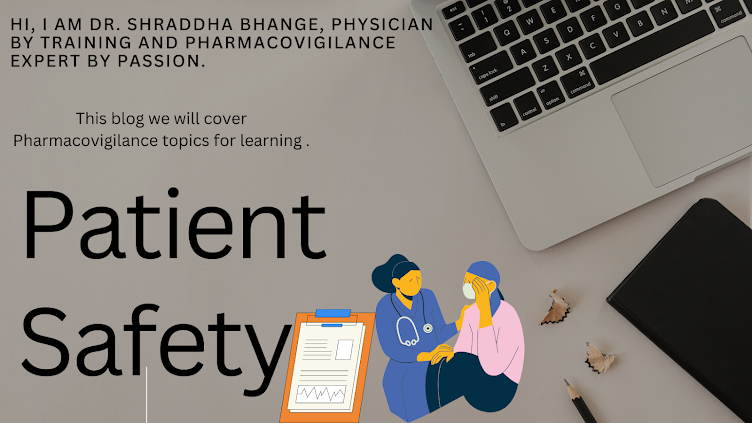The world is struggling with COVID-19 pandemic situation and hence healthcare and pharma industry has taken the centre stage. Everybody is looking towards our industry to find a solution for this pandemic. And yes , our industry is doing its best, new vaccines are being looked at, faster tests to identify the virus is being worked on, alternative treatments are investigated. Off course with this new and old treatments being investigated, ensuring they are safe and effective is critical. It is now more important that pharmacovigilance activities should tbe discussed and implemented more critically.
So what are the challenges, solutions and changes that have been taking in PV due COVID -19?
It is impossible to enumerate or follow all the new regulations or news related to this topic, i have tried to list few that i have found and seemed important below:
1. MedDRA :(Reference link below)
MedDRA released its version 23.0 recently to add terms related to COVID-19. This updated terms are available in excel to be downloaded . A quick glance at excel, i could see 83 LLTs are added.
However the SMQ's are not updated (i.e. Infective pneumonia and SMQ Opportunistic infections) which will be impacted by COVID-19 terms, what i understand from this is, if we are using SMQ's to run linelisting for COVID-19, the AEs will not be populated in that SOC's.
MedDRA has decided to soon launch a dedicated SMQ for COVID-19 in version 23.1.
2. Regulatory submission timelines for ICSRs:(reference links below):
Almost all HA (health authorities) are providing flexibility to MAH (marketing authorization holder) to submit ICSR (individual case safety reports) as per priority. HA's acknowledges there could be reduced workforce and other operational challenges faced by MAHs. They do not discourage reporting AEs on time and as per pre pandemic processes if possible, but in case its not possible, they have released detailed guidelines.
I have enlisted 2 main HAs as an example, EMA and FDA.
EMA enlist prioritizing as below:
1. Serious ICSR related to COVID19 products
2.Other serious ICSR
3.Non serious ICSR related to COVID19 products
4.Other Non serious ICSR
To note lack of effect AE associated with COVID-19 treatment medications will be expedited to be submitted within 15 days as it LT disease.
FDA has also taken same stand as in, they have said to prioritize reporting of AE related to COVID-19 first. All other AEs if can be reported in same possible way by MAH , it should be, however if not possible, they should be stored and reported as per time lines within 6 months to FDA .
3. Treatment emergent AEs (reference links below)
Medications that are approved for other indications are being used for treating COVID-19 . I have enlisted few of them below. So the ICSR's and other PV documents for this medications might increase. Clinical trials are also underway for same, for the new COVID-19 indication.
1.hydroxychloroquine
2. lopinavir/ritonavir
2. lopinavir/ritonavir
For example, for hydroxychloroquine which is approved as anti malarial but being indicated for treatment of COVID-19, there was already established risk of QT-prolongation, but as this is being used at higher dose than as antimalarial the risk might have increased . This should be monitored and hence ICSR management and safety monitoring will increase for such medications.
Other drugs that are being used for COVID-19 treatment are but not limited to other antivirals -oseltamivir, ribavarin, antibacterials - amoxicillin/clavulanate, azithromycin, ceftriaxone, vancomycin and anti-inflammatories/other drugs -methylprednisolone, mucinex etc.
4. Changes by HA for faster development of treatment:
Every HA, Pharma companies and even common man, all are waiting andworking hard to find a treatment for COVID-19. To make treatment available as fast as we can, many HA have taken measures to reduce the wait time in approval process.
As an example, EMA has released a guidance where they are providing flexibilty to MAH by making the submission of application for potential treatments free of charge, without submission deadlines and the EMA will process application in short time of only 20 days.
FDA also has released a fast track approval program Coronavirus Treatment Acceleration Program (CTAP), where FDA will ensure faster application review of COVID-19 treatment developers, as early as 24 hours.
Also the conduct of clinical trials for the new treatment will significantly be different, hence ensuring the safety and following PV guideline is very critical. The top 5 vaccines in race are enlisted below.
1.The SARS-CoV-2 mRNA-1273 by moderna
2.Ad5-nCoV vaccine by CanSino Biologics
3.ChAdOx1 by University of Oxford
4. DNA vaccine by Inovio Pharmaceuticals
5.Inactivated SARS-CoV-2 by Sinovac Biotech
5. Other operational changes:
The conduct of clinical trials, GMP,GCP,GDP and other such guidelines for other products have also been revised.
Due to social distancing, lockdown, travel bans and such the standard processes in PV are affected.
For example conduct of audit and inspections will be virtual. Risk communication measures to HCP from MAH will be more via social media channels.
There are many other changes and challenges and or revised guidelines that will impact PV (cannot enlist all to limit length of blog), if you know more, please share in comments.
Reference:
https://www.fda.gov/drugs/coronavirus-covid-19-drugs/coronavirus-treatment-acceleration-program-ctap
Written by:
Dr.shraddha Bhange.
Connect with me Via comments below or on linkedin. (I do not respond to Facebook messages)
Support the cause of better rural education with me:ThinkSharp Foundation http://thinksharpfoundation.org/#home

